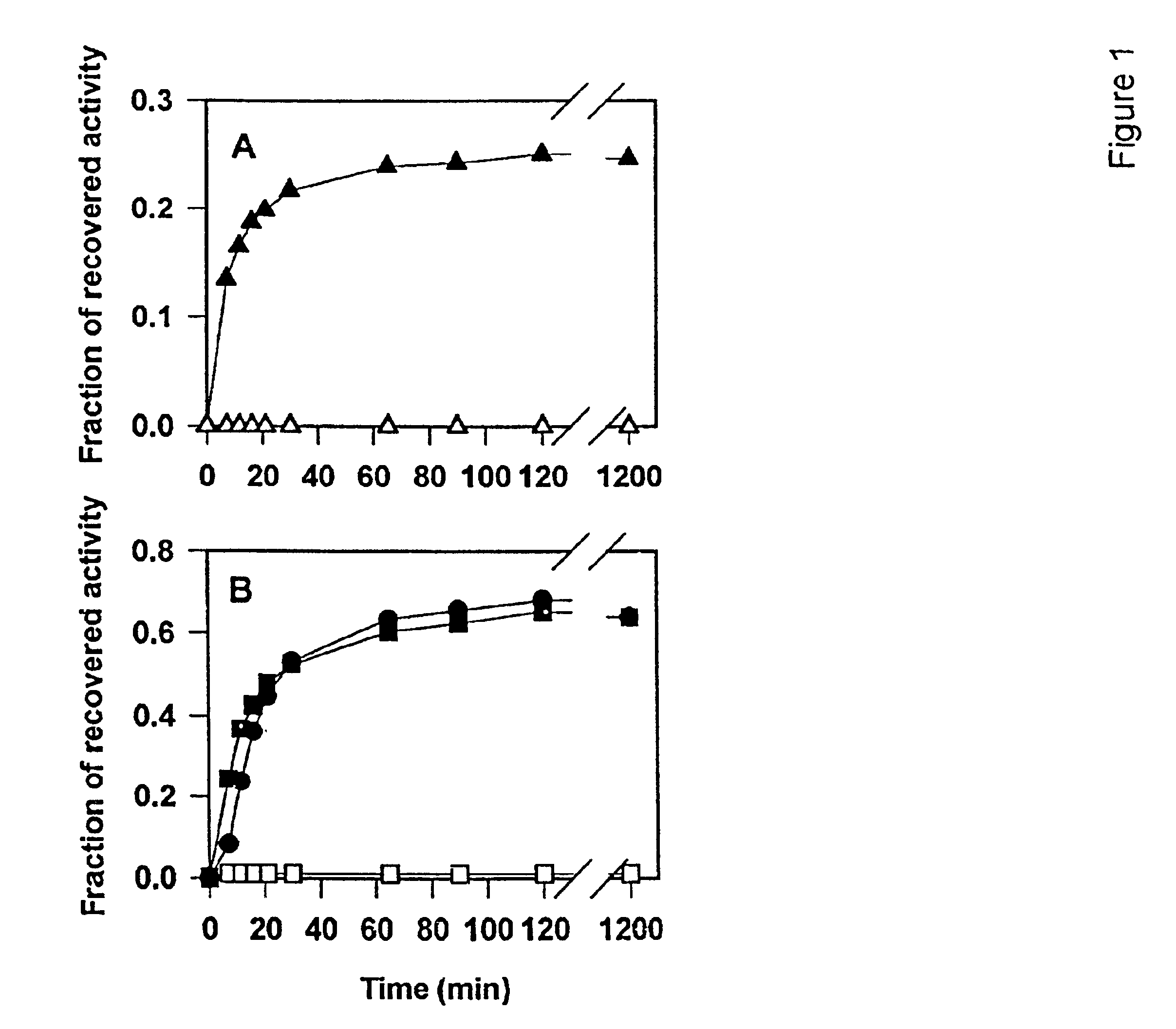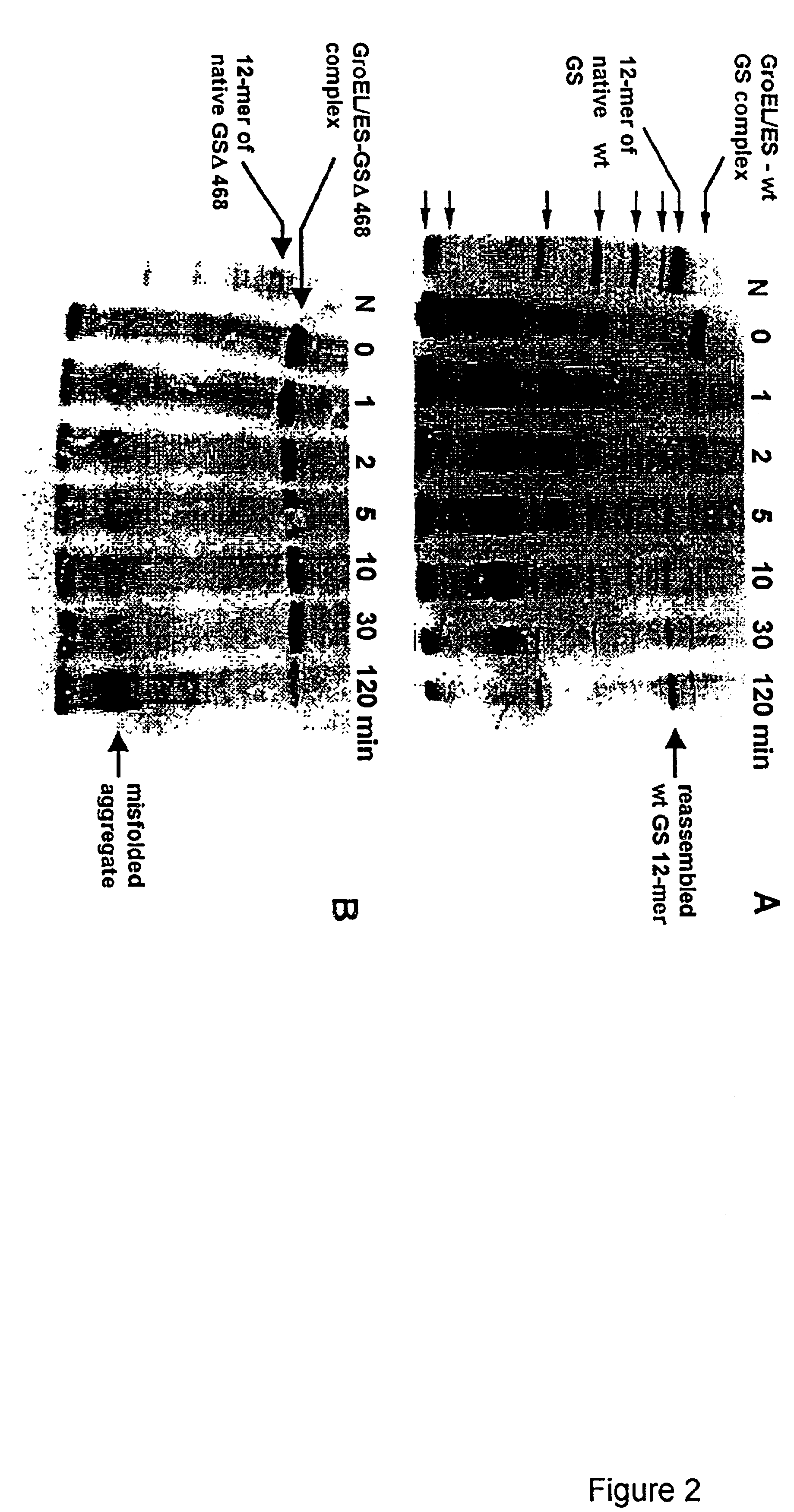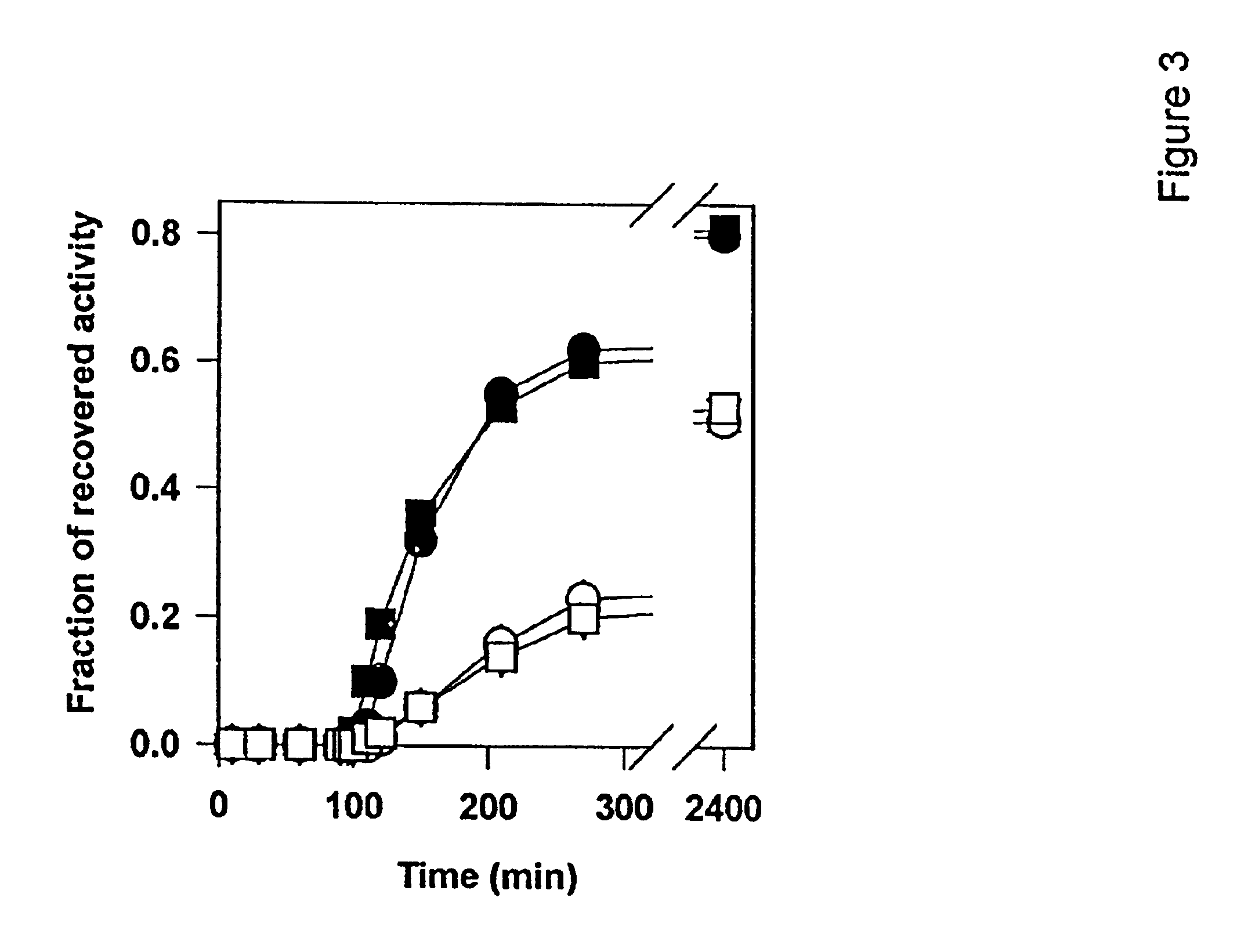Chaperonin and osmolyte protein folding and related screening methods
a technology of chaperonin and osmolyte, which is applied in the field of in vitro protein folding and related screening methods, can solve the problems of inability to universally apply a procedure, large intracellular aggregate or inclusion body, and protein refolding in vitro
- Summary
- Abstract
- Description
- Claims
- Application Information
AI Technical Summary
Benefits of technology
Problems solved by technology
Method used
Image
Examples
example 1
Single Chaperonin Plus Osmolyte Folding
[0044]FIG. 3 shows Chaperonin-dependent renaturation of wild type and mutant GS in the presence of glycerol. Urea-denatured GS species were rapidly diluted into refolding buffer at 37° C. with either 1 μM GroEL alone (circles) or 1 μM GroEL and 2 μM GroES (squares). The activity of GS proteins was followed for 90 min. Upon the addition of 5 mM ATP and 4 M glycerol, the measurements of enzymatic activity of wild type (filled symbols) and mutant (open symbols) GS were continued. Final concentration of GS species was 0.3 μM.
[0045]In 4 M glycerol, the kinetics of chaperonin-dependent refolding of GSΔ468 was slower than that of wild type GS; after the incubation for 20 to 40 hours at 37° C. it recovered about 50% of its initial activity. Refolding kinetics of the mutant protein were similar regardless of the presence of GroES, confirming that optimal folding of the mutant could be achieved without the co-chaperonin. This illustrates that solution co...
example 2
Concentration of Chaperonin-Protein Complexes
[0046]This method also works under conditions where larger quantities of folded product are needed. Applicants have previously demonstrated that the GroEL-protein substrate complexes can be routinely concentrated with little loss in recovery of wild type GS and rhodanese (Fisher, M. T. (1993) J. Biol. Chem. 268, 13777-13779; Smith, K. E. and Fisher, M. T. (1995) J. Biol. Chem. 270, 21517-21523, the disclosures of which are incorporated herein by reference). In the present invention, the GSΔ468-GroEL complexes were formed at an optimal substrate-to-chaperonin molar ratio (2:1) and then concentrated about 25-fold. The control experiment showed that only about 1% of the protein was lost in this concentration step. Importantly, very little spontaneous refolding occurred in glycerol solutions at this higher initial concentration of GSΔ468 (Table 2). However, after the chaperonin-GSΔ468 complexes were formed and concentrated, the refolding yiel...
example 3
Demonstration that Immoblized GroEL Can Function to Refold Polypeptides
[0048]GroEL can be immobilized on inert supports (in this case agarose beads) and can bind unfolded proteins. The immobilized system functions identically to the conditions found in solution (in that addition of osmolytes promises renaturing of the chaperonin complexed proteins). FIG. 5 shows the results of the refolding of MDH using GroEL chaperonin affixed to agarose beads.
[0049]FIG. 6 shows like results for the refolding of GS on GroEL beads. Refolding of GS from immobilized chaperonin system. The immobilized chaperonin can be reused. There is no apparent decline in reactivated activity when the beads are incubated for an extra half hour at 37° C.
PUM
| Property | Measurement | Unit |
|---|---|---|
| concentrations | aaaaa | aaaaa |
| pH | aaaaa | aaaaa |
| temperature | aaaaa | aaaaa |
Abstract
Description
Claims
Application Information
 Login to View More
Login to View More - R&D
- Intellectual Property
- Life Sciences
- Materials
- Tech Scout
- Unparalleled Data Quality
- Higher Quality Content
- 60% Fewer Hallucinations
Browse by: Latest US Patents, China's latest patents, Technical Efficacy Thesaurus, Application Domain, Technology Topic, Popular Technical Reports.
© 2025 PatSnap. All rights reserved.Legal|Privacy policy|Modern Slavery Act Transparency Statement|Sitemap|About US| Contact US: help@patsnap.com



